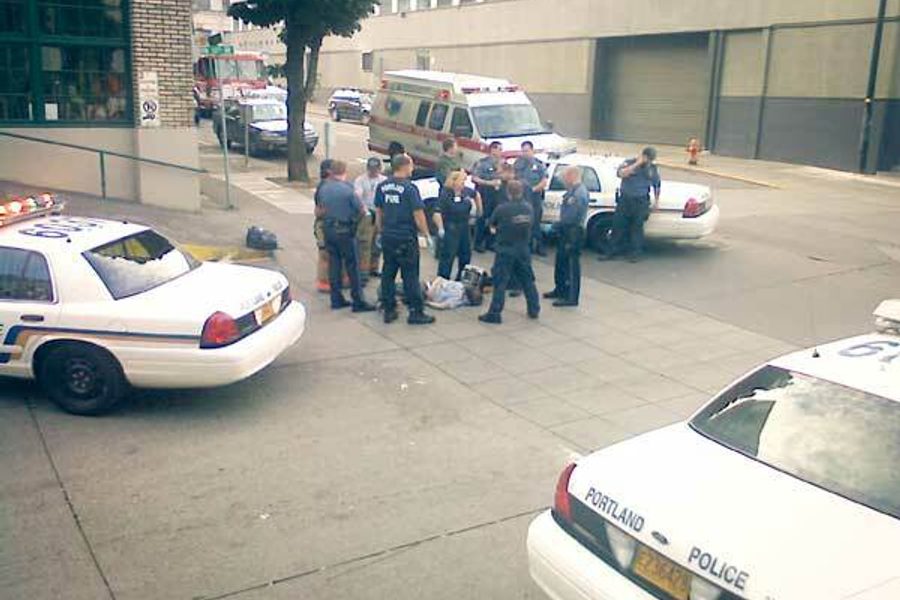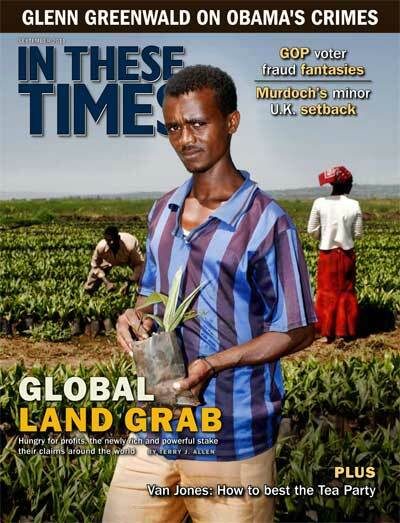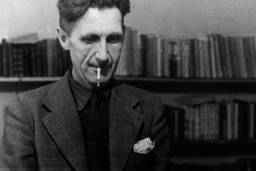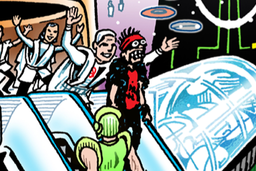
On June 8, the Justice Department announced a civil rights investigation to see if police officers in Portland, Ore., were engaged in a “pattern or practice” of using excessive force against the mentally ill. The investigation comes after several incidents in which police shot people in psychological crisis.
The problems with the mental health system are real enough, but this focus may obscure other dynamics propelling police violence – specifically, those relating to race and class.
Two high-profile cases in Portland help illustrate the point.
The lonesome death of James Chasse
James Chasse was a well-known figure in downtown Portland, a writer and musician with a history of mental illness and occasional homelessness. In September 2006, the police spotted Chasse loitering in the recently redeveloped Pearl District. As one officer put it, he was “doing something suspicious or acting just, um, odd.”
Officer Chris Humphreys approached; Chasse ran. The police chased him, tackled him and beat him. Chasse suffered 26 broken bones (mostly ribs), 48 distinct bruises and abrasions, extensive trauma to the head and a punctured lung. He died later that day.
His family sued and received a $1.6 million settlement. Meanwhile, two cops were suspended for failing to ensure that the bloodied, unconscious man they were arresting received medical treatment. No one was disciplined for beating him.
There is no evidence that Chasse committed any crime. The worst he was accused of was urinating in public. The offense itself builds in an element of class-bias: It is the equivalent of trespassing under bridges or panhandling, activities that homeless people resort to in order to survive. In practice, enforcement of such laws comes very close to criminalizing poverty per se.
In this case, moreover, the accusation was merely an excuse for what then-Transit Police Commander Donna Henderson later termed a “pretext stop.” In other words, the police approached, and then chased, and then killed Chasse, not for anything specific that he did, but simply because, as they saw it, he was “suspicious” – or rather: “just, um, odd.”
Chasse died because the cops decided that he did not belong.
‘He could be a gangster’
Nearly four years later, on May 12, 2010, Portland police pulled over a young African-American man named Keaton Otis, ostensibly for changing lanes without a signal. It’s not clear exactly what happened next, but within minutes Officer Christopher Burley had been shot and Otis was dead after being shot 23 times.
It was not long before the police were placing the blame on the mental health system. Burley told the press that he wished Otis had found treatment for his psychological troubles: “The community as a whole failed Mr. Otis,” he said. “He deserved resources.”
But the police did not stop Otis because of his mental distress any more than they stopped him because of his driving. The cops involved were part of the “Hot Spot Enforcement Action Team,” a gang squad concentrating on the area surrounding Lloyd Center mall. They stopped Otis because Officer Ryan Foote saw a black man wearing a hooded sweatshirt and concluded “this guy… kind of looks like he could be a gangster.”
It is against Portland police policy to single people out solely because of their race, but Foote’s assessment seems to pass official muster. After the shooting, the public information officer, Detective Mary Wheat, stated: “The officers would not have been doing their duty if they had not pulled him over.”
Police now admit that they had no evidence that Otis had any history of gang activity. Aside from a single traffic ticket, his record was clean. Again, we see police policies unfold in ways that are not only discriminatory, but deadly.
Policing ‘quality of life’
In Portland, the standards of public order that the police enforce are shaped and propelled in large part by the agenda of the local chamber of commerce, the Portland Business Alliance (PBA). In terms of both dollars spent and the number of visits to public officials, PBA is the most active lobbying group in the city.
PBA has been a vocal advocate of “quality of life” policing and was a major proponent of the “Sit-Lie” law, which prohibited resting or reclining on the sidewalk. Predictably, between August 2007 and June 2008, 72.3 percent of the 159 people receiving warnings or citations for violating the Sit-Lie law were homeless. In fact, Mike Kuykendall – then vice president of PBA and co-chair of the Mayor’s Street Access For Everyone (SAFE) committee, now director of services in the Police Bureau – admits the law was designed with the homeless in mind. In 2008, he told the Portland Mercury:
The behavior of many of the teenagers and young adults who spend their days on Portland streets was the impetus behind the SAFE ordinance, as many businesses were impacted by the negative impression they were giving downtown.
Central Precinct Commander (and now Police Chief) Mike Reese agreed: “The folks we’re really having a problem with are these Road Warrior youth.” After twice being ruled unconstitutional – first in 2004 by Circuit Court Judge Marilyn Litzenberger, then in 2009 by Circuit Court Judge Stephen Bushong – the Sit-Lie law was replaced in 2010 with a new Sidewalk Management Plan. The new version does not ban sitting outright, but in selected commercial districts it requires at least six feet of clearance between the seated individual and any building, essentially forcing people to the curb.
PBA’s agenda is clearly outlined in the April/May 2010 issue of its downtown “Business Improvement District” newsletter, BID News, in which BID chair Michelle Martin explains the problem, as she sees it:
We have seen a group of individuals, who some refer to as ‘road warriors’ or ‘summer travelers,’ begin to return to downtown Portland. They are approximately 18-30 years old, can be very unkempt, … and regularly engage in illegal or aggressive behavior.
(Both Reese and Martin have argued that these young people aren’t really homeless because they choose to live on the streets.) Martin then explains several steps PBA is taking as part of its “Clean and Safe” program, beginning with the sidewalk law:
First, we have been working with Mayor Adams … on a new Sidewalk Use Ordinance, which was passed by the Portland City Council on May 6. … Second, Central Precinct Commander Dave Famous has instituted a ‘zero tolerance’ program to deal with individuals committing livability offenses downtown.
Hired guns
PBA also takes a hand in enforcement. The Clean and Safe Program deploys “42 armed and unarmed security officers, many of them retired police officers.” In addition, PBA has contracted with the Portland Police Bureau to provide four bike cops and the Mounted Patrol Unit to police the downtown using the organization’s radio dispatch system.
PBA spends $1.15 million annually – the largest item in its budget – to contract with a private security firm, Portland Patrol, Inc., which in turn leases sworn officers from the Police Bureau. According to the company’s website, “PPI has the honor of being the only private security agency in the country to have four full-time police officers housed out of a private security office, working hand-in-hand with our staff to improve community and business livability along with chronic nuisance issues.”
Under the terms of PPI’s contract, its officers are required to “wake up all individuals who use [the] sidewalk, and business doorways, as sleeping locations,” and to “stop offensive conduct wherever possible.” Making its mission clear, PPI staff have distributed laminated cards to local businesses, urging them to call the private guards to handle “Homeless Persons,” “Panhandling” and the “Mentally Ill.”
Though dressed like cops and often carrying guns, PPI officers have no public oversight and cannot make arrests. But they are authorized to issue warnings and exclude people from city parks. Furthermore, according to the corporation’s website, their partners in the Police Bureau “frequently make arrests, write citations for criminal and ordinance violations, or take other actions based on direct referrals from PPI officers. … As a result, our PPB officers regularly average over 100 arrests per month!”
Exclusion – and ‘livability’
In addition to its war on the poor, the Business Alliance has also been supportive of Drug Free Zones, which allowed police to exclude suspected drug dealers from certain designated areas prior to trial. PBA spokesperson Megan Doern said the law helped create “an attractive, livable downtown.”
The zones were abandoned in 2007 when it was shown that more than half the people issued exclusions (59 percent) were black. (Blacks represent only 6 percent of the local population.) But earlier this year, Mayor Sam Adams revealed a plan to re-introduce Drug Free Zones with one important change: Judges, and not cops, would issue the exclusions. Around the same time, the city also created Gun Crime Exclusion Zones, including one downtown and one in the city’s largest black neighborhood.
While the zones were defunct, the police, aided with $50,000 in PBA funding, simply replaced them with the Neighborhood Livability Crime Enforcement Program. The program consisted of a secret list of persistent low-level offenders to be singled out for special attention – surveillance, enforcement and felony prosecution, plus, as a salve to Portland’s liberal conscience, special access to services like housing assistance and drug treatment. More than half of the 408 people on the list are African-American.
By the Bureau’s own reporting, in 2009, blacks represented 12 percent of all Portland Police traffic stops – twice the percentage of the population. That same year, taking into account all police stops – not just traffic stops – blacks represented 21 percent. Additionally, they comprise 23 percent of arrests and 29 percent of the incidents in which police report using force. Those rates have been more or less constant for the last five years, with black drivers stopped at 2.73 times the rate of whites.
The numbers reflect something more than the personal biases of individual police officers. They demonstrate an institutional orientation that treats blacks as suspects, as hazards and as targets for violence. The death of Keaton Otis is one result of this orientation. In September 2009, several months before he shot Otis, Officer Berne admitted in court that race is “a factor I’d consider” when making a stop.
Clearly, Berne is not alone. More than a year earlier, James Pitkin, a Willamette Week reporter, tagged along with the cops during “Operation Cool Down,” in which police increased their presence in gang-affected neighborhoods. Pitkin reported that the cops passed by groups of white people without notice, but stopped, searched and questioned black and Latino men when they saw them.
Gang enforcement officer Russ Corno explained: “Profiling – to me, I’m not scared of that word. … If you’re profiling people based just on their race, that is an issue. We’re profiling people based on crime.” And yet, Pitkin wrote: “Corno is frank about who they’re targeting: young black men.”
The police chief at the time, Rosie Sizer, seemed to endorse this approach. She told the newspaper that gang violence
is predominantly African-American males being violent against other African-American males. So from the sense of criminal profiling as opposed to racial profiling, race is in the mix. … We do not want to target young African-American men who are uninvolved in gang activity. But it’s impossible to perfectly sort.
Enforcing inequality
The deaths of Otis and Chasse are not generally discussed together, but they share several elements worth noting.
Neither of these men were, in any real sense of the word, “suspects.” They were stopped simply because they belonged to groups that the police considered suspicious in and of themselves. One was black, and the other was – or rather, the police labeled him – “transient.” Both incidents began with trivial pretexts and ended with deadly violence.
Moreover, both involve police control of public space. In particular, they show the cops acting to restrict disadvantaged groups from using the streets in commercial districts. In all these respects, the two cases resemble each other. These similarities show us something of the real nature of proactive and public-order policing. They show the race and class bias implicit in terms like “quality of life” and “livability” – at least as they are applied to law enforcement. And finally, they reveal the violence underlying our systems of race and class privilege.








